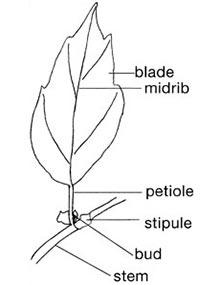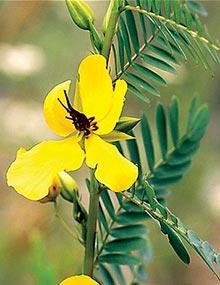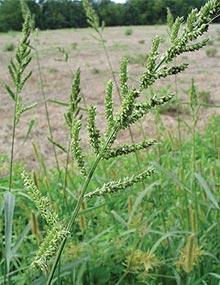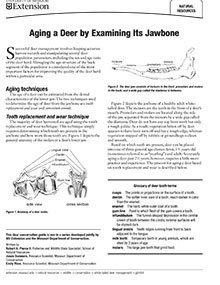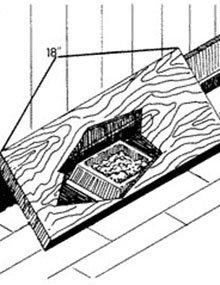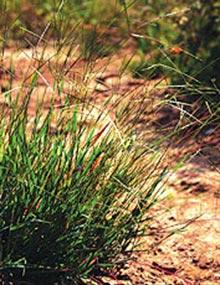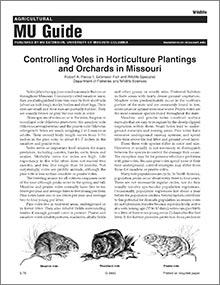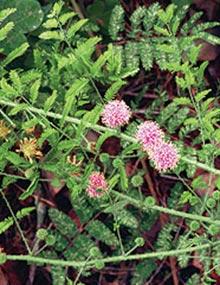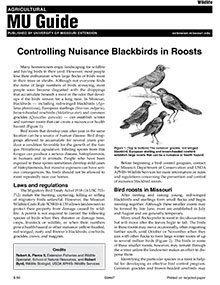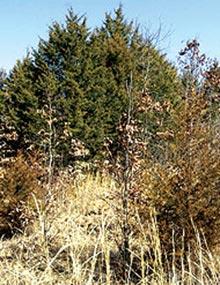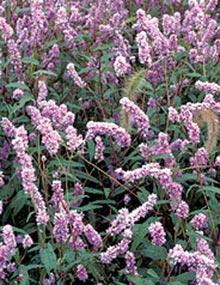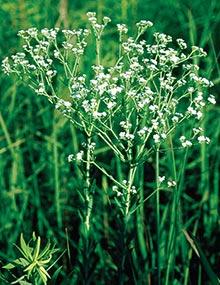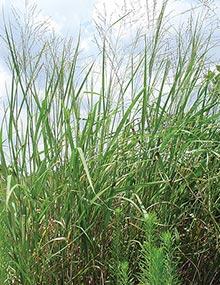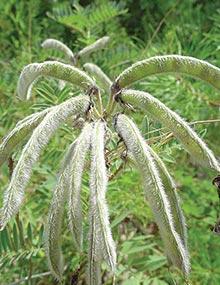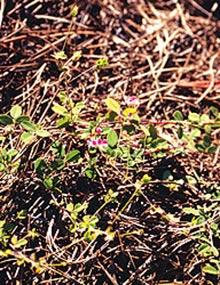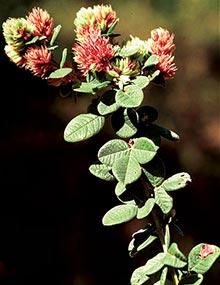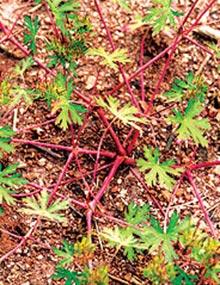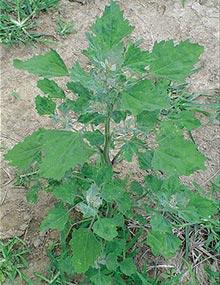Quail-Friendly Plants of the Midwest, Page 02
Reviewed
Refer to this glossary for definitions of words and phrases related to plants.
Writing Columns
Reviewed
Before writing a column, think about purpose, audience, content and structure. Visit our website today to learn more about writing columns.
Quail-Friendly Plants of the Midwest, Page 37
Reviewed
Partridge pea grows from 12 to 18 inches up to 3 feet tall. It has compound, alternate leaves. Leaflets are less than 1 inch long. Flowers are bright yellow with reddish-purple bases, about 1 inch across. Ripened seedpods are red-brown.
Quail-Friendly Plants of the Midwest, Page 05
Reviewed
Barnyardgrass is most often found growing in moist areas. The large seeds of this grass make it an important food source for bobwhites.
Quail-Friendly Plants of the Midwest, Page 40
Reviewed
Poison ivy is a vine that can grow up to 60 feet high or a low, upright shrub. It has alternate leaves with three oval to lance-shaped leaflets with a pointed tip.The flowers are greenish white and grow in clusters 1 to 4 inches long on new growth of stems.
Quail-Friendly Plants of the Midwest, Page 08
Reviewed
Mature seed stalks of big bluestem are copper colored and often grow more than 5 feet tall. The clumpy growth of big bluestem allows room for other plants to exist and provides excellent habitat structure for nesting and roosting
Aging a Deer by Examining Its Jawbone
Reviewed
Managing the age structure of bucks is considered very important for improving the quality of the deer herd. Visit our site to learn about aging a deer.
Quail-Friendly Plants of the Midwest, Page 43
Reviewed
Common ragweed commonly grows to 18 inches. Leaves are simple, alternate, smooth and deeply lobed. Often the lobes are lobed again.
Bait Stations for Controlling Rats and Mice
Reviewed
Using bait stations to control rats and mice can be more effective and safe than using poison. Visit our website today to learn more.
Quail-Friendly Plants of the Midwest, Page 11
Reviewed
Often found in disturbed areas, crab grass tends to indicate early successional vegetation, and thus good quail habitat. However, late spring disturbance may result in a crab grass response heavy enough to displace other beneficial or desired plants.
Controlling Voles in Horticulture Plantings and Orchards in Missouri
Reviewed
Three species of voles occur in the state: the pine or woodland vole (Microtus pinetorum), the meadow vole (Microtus pennsylvanicus) and the prairie vole (Microtus ochrogatser). Voles are small, weighing 1 to 2 ounces as adults.
Quail-Friendly Plants of the Midwest, Page 46
Reviewed
Sensitive brier has prostrate stems and seedpods covered with hooked barbs. Doubly compound, featherlike leaves close rapidly when touched or disturbed. Flower clusters are a fuchsia ball dotted with contrasting yellow stamens.
Quail-Friendly Plants of the Midwest, Page 14
Reviewed
Eastern red cedar is a small to medium-sized tree up to 50 feet tall. It is an aromatic evergreen with a dense pyramid-shaped to cylindrical crown.
Managing for White-tailed Deer in Missouri: Establishing a Wildlife Management Cooperative
Reviewed
White-tailed deer management
This deer conservation guide is one in a series developed jointly by MU Extension and the Missouri Department of Conservation.
Quail-Friendly Plants of the Midwest, Page 49
Reviewed
Annual smartweeds has abundant, swollen nodes where the leaf meets the stem. Leaves are simple, alternate and parallel-veined; most are lanceolate. Flower clusters are white or pink, and at maturity the plant yields large numbers of seeds.
Quail-Friendly Plants of the Midwest, Page 17
Reviewed
Flowering spurge may reach 3 feet tall on richer soils. Inflorescences are multibranched, with multiple flower heads per branch. Flowers have five white petals with a yellow center and average about one-third inch across.
Quail-Friendly Plants of the Midwest, Page 52
Reviewed
Switch grass exhibits an upright, bunchy growth form. The leaves twist in a corkscrew-like pattern from the base to the tip of the blade.
Quail-Friendly Plants of the Midwest, Page 20
Reviewed
Goat’s rue, a member of the bean family, is readily identified by its striking flower, which consists of a cream-colored upper petal above two bright pink lower petals. Leaves are alternate, compound and usually hairy, with a pointed, hairlike tip.
Quail-Friendly Plants of the Midwest, Page 55
Reviewed
Trailing lespedezas are small, native lespedezas with trailing stems that can readily form thick mats over bare areas if left undisturbed. The small flowers range from purple to white and can produce a large quantity of seeds.
Quail-Friendly Plants of the Midwest, Page 23
Reviewed
Hairy lespedeza leaflets occur in threes. This perennial plant earns its name from its stem and oblong leaflets, both of which are covered with hairs.
Quail-Friendly Plants of the Midwest, Page 26
Reviewed
Illinois bundleflower can be identified in summer by the doubly compound, fernlike leaves and white spherical flower heads. By fall, the stems become tough and woody, and the seedpods are distinctive, bearing a ball-shaped cluster of pods, each containing several flat, brown seeds.
Quail-Friendly Plants of the Midwest, Page 58
Reviewed
Leaves of Geranium species are deeply cleft and palmately lobed. Seeds are located within the sharply pointed “crane’s bill” formed by the tubelike style of the flower.
Quail-Friendly Plants of the Midwest, Page 29
Reviewed
Lambsquarters is rather nondescript and typically grows 2-6 feet tall. Leaves are triangular or kite-shaped, and their surfaces often have a powdery white appearance.
Quail-Friendly Plants of the Midwest
Reviewed
Learn how to identify plants important to bobwhites in the Midwest so that you can critically evaluate the food and cover components of habitat on your land.
